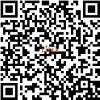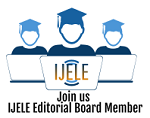(2) * Sularso Sularso
(3) Mwansa Edward Chabu
*corresponding author
AbstractStudents' difficulties in learning Javanese script are caused by several factors, such as challenges in distinguishing one character from another, low interest and motivation to learn, and limited access to educational materials and resources. This study aims to evaluate the effectiveness of the singing method as a learning strategy in teaching Javanese Nglegena script. This study uses a participatory qualitative approach with data collection techniques through interviews and observations of research subjects, namely fourth-grade students at an elementary school in Yogyakarta. The research sample consisted of 28 students, consisting of 16 boys and 12 girls. The results of the study showed that the singing method provided a more positive and interesting learning experience. Quantitatively, there was an increase in students' interest and motivation in learning, which contributed to a more interactive and enjoyable learning process. The main contribution of this study is the development of a more effective Javanese Nglegena script learning model through the singing method. This model can be adopted by Javanese language educators to increase students' interest in learning Javanese script. In addition, this method has also been proven to help students memorize material faster and maintain memory longer.
KeywordsJavanese Script Nglegena; Singing Method; Learning Strategy; Learning Interest and Motivation; Interactive Learning
|
DOIhttps://doi.org/10.31763/ijele.v6i2.1932 |
Article metrics10.31763/ijele.v6i2.1932 Abstract views : 162 | PDF views : 16 |
Cite |
Full Text Download Download
|
References
[1] T. G. T. Pigeaud, “Preliminary Historical Remarks on the Literature of Java,†in Synopsis of Javanese Literature 900–1900 A.D., Dordrecht: Springer Netherlands, 1967, pp. 1–44. doi: 10.1007/978-94-015-0752-3_1
[2] U. D. Choiro, K. Qismiyah, and D. P. Yuniar, “Development of Learning Media with Javanese Script Monopoly,†in Proceedings of the International Conference on Educational Management and Technology (ICEMT 2022), Paris: Atlantis Press SARL, 2023, pp. 172–179. doi: 10.2991/978-2-494069-95-4_21
[3] T. Walker, I. Liyanage, S. Madya, and S. Hidayati, “Media of Instruction in Indonesia: Implications for Bi/Multilingual Education,†in Multilingual Education Yearbook, 2019, pp. 209–229. doi: 10.1007/978-3-030-14386-2_12
[4] R. Murwati, B. Yulianto, and S. Shodiq, “Developing Javanese Local Curriculum Content Focusing on Literacy to Grow Studentsr Literacy Culture,†in Proceedings of the 2nd Social Sciences, Humanities and Education Conference: Establishing Identities through Language, Culture, and Education (SOSHEC 2018), 2018, pp. 21–25, doi: 10.2991/soshec-18.2018.5.
[5] Q. Yusuf, Z. Jusoh, and Y. Q. Yusuf, “Cooperative Learning Strategies to Enhance Writing Skills among Second Language Learners,†Int. J. Instr., vol. 12, no. 1, pp. 1399–1412, Jan. 2019, doi: 10.29333/iji.2019.12189a.
[6] A. R. Widiarti, A. Harjoko, Marsono, and S. Hartati, “The Model and Implementation of Javanese Script Image Transliteration,†in 2017 International Conference on Soft Computing, Intelligent System and Information Technology (ICSIIT), 2017, pp. 51–57, doi: 10.1109/ICSIIT.2017.17.
[7] U. M. Arief and D. Z. Zain, “The Effectiveness of Android Based Javanese Alphabet Learning Media on Student Learning Outcomes,†in Proceedings of the 2nd Vocational Education International Conference, VEIC 2020, 27th August 2020, Semarang, Indonesia, 2021, pp. 1–7, doi: 10.4108/eai.27-8-2020.2305803.
[8] L. L. Fedorova, “The development of structural characteristics of Brahmi script in derivative writing systems,†Writ. Lang. Lit., vol. 15, no. 1, pp. 1–25, Feb. 2012, doi: 10.1075/wll.15.1.01fed.
[9] J. de la Fuente, F. J. Peralta-Sánchez, J. M. MartÃnez-Vicente, P. Sander, A. Garzón-Umerenkova, and L. Zapata, “Effects of Self-Regulation vs. External Regulation on the Factors and Symptoms of Academic Stress in Undergraduate Students,†Frontiers in Psychology, vol. 11. 26-Aug-2020, doi: 10.3389/fpsyg.2020.01773.
[10] S. V. Kosyreva, “About Studying the Traditional Singing Tradition of the Vepsians in the Context of Cognitive Ethnomusicology,†Music Scholarsh. / Probl. Muzykal’noj Nauk., no. 4, pp. 82–89, Dec. 2019, doi: 10.17674/1997-0854.2019.4.082-089.
[11] J. Alisaari and L. M. Heikkola, “Songs and poems in the language classroom: Teachers’ beliefs and practices,†Teach. Teach. Educ., vol. 63, pp. 231–242, Apr. 2017, doi: 10.1016/j.tate.2016.12.021.
[12] V. Busse, J. Jungclaus, I. Roden, F. A. Russo, and G. Kreutz, “Combining Song—And Speech-Based Language Teaching: An Intervention With Recently Migrated Children,†Front. Psychol., vol. 9, pp. 1–10, Nov. 2018, doi: 10.3389/fpsyg.2018.02386.
[13] C. Alinte, “Teaching Grammar through Music,†J. Linguist. Intercult. Educ., vol. 6, pp. 7–28, Jun. 2013, doi: 10.29302/jolie.2013.6.1.
[14] Z. Zhang and R. Heydon, “Special Issue: Language, Literacy, and Singing,†Lang. Lit., vol. 16, no. 3, pp. 1–3, Nov. 2014, doi: 10.20360/G2TS30.
[15] M. D. Fetters, L. A. Curry, and J. W. Creswell, “Achieving Integration in Mixed Methods Designs-Principles and Practices,†Health Serv. Res., vol. 48, no. 6, pp. 2134–2156, Dec. 2013, doi: 10.1111/1475-6773.12117.
[16] A. L. Baylor and D. Ritchie, “What factors facilitate teacher skill, teacher morale, and perceived student learning in technology-using classrooms?,†Comput. Educ., vol. 39, no. 4, pp. 395–414, Dec. 2002, doi: 10.1016/S0360-1315(02)00075-1.
[17] D. W. M. Chan, E. W. M. Lam, and M. A. Adabre, “Assessing the Effect of Pedagogical Transition on Classroom Design for Tertiary Education: Perspectives of Teachers and Students,†Sustainability, vol. 15, no. 12, p. 9177, Jun. 2023, doi: 10.3390/su15129177.
[18] L. Posey and C. Pintz, “Transitioning a bachelor of science in nursing program to blended learning: Successes, challenges & outcomes,†Nurse Educ. Pract., vol. 26, pp. 126–133, Sep. 2017, doi: 10.1016/j.nepr.2016.10.006.
[19] M. Liu, M. J. Gorgievski, J. Qi, and F. Paas, “Increasing teaching effectiveness in entrepreneurship education: Course characteristics and student needs differences,†Learn. Individ. Differ., vol. 96, p. 102147, May 2022, doi: 10.1016/j.lindif.2022.102147.
[20] E. Tomczak and R. Lew, “‘The Song of Words’: Teaching Multi-Word Units with Songs,†Southeast Asian J. English Lang. Stud., vol. 25, no. 4, pp. 16–33, Dec. 2019, doi: 10.17576/3L-2019-2504-02.
[21] M. A. Wibowo, M. Soleh, W. Pradani, A. N. Hidayanto, and A. M. Arymurthy, “Handwritten javanese character recognition using descriminative deep learning technique,†in 2017 2nd International conferences on Information Technology, Information Systems and Electrical Engineering (ICITISEE), 2017, pp. 325–330, doi: 10.1109/ICITISEE.2017.8285521.
[22] H. Khiat, “Using automated time management enablers to improve self-regulated learning,†Act. Learn. High. Educ., vol. 23, no. 1, pp. 3–15, Mar. 2022, doi: 10.1177/1469787419866304.
[23] K. A. Aidarbekova, S. K. Abildina, S. A. Odintsova, A. O. Mukhametzhanova, and N. A. Toibazarova, “Preparing future teachers to use digital educational resources in primary school,†World J. Educ. Technol. Curr. Issues, vol. 13, no. 2, pp. 188–200, May 2021, doi: 10.18844/wjet.v13i2.5653.
[24] R. Werner, “Music, movement and memory: Pedagogical songs as mnemonic aids,†TESOL J., vol. 9, no. 4, pp. 1–11, Dec. 2018, doi: 10.1002/tesj.387.
[25] M. Jankowska and M. Atlay, “Use of creative space in enhancing students’ engagement,†Innov. Educ. Teach. Int., vol. 45, no. 3, pp. 271–279, Aug. 2008, doi: 10.1080/14703290802176162.
[26] C. Bennett, “Teaching Culturally Diverse Choral Music With Intention and Care: A Review of Literature,†Updat. Appl. Res. Music Educ., vol. 40, no. 3, pp. 60–70, Jun. 2022, doi: 10.1177/87551233211051946.
[27] S. E. Osman, V. Tischler, and J. Schneider, “‘Singing for the Brain’: A qualitative study exploring the health and well-being benefits of singing for people with dementia and their carers,†Dementia, vol. 15, no. 6, pp. 1326–1339, Nov. 2016, doi: 10.1177/1471301214556291.
[28] K. M. Ludke, “Using Singing and Songs to Learn and to Teach,†in The Routledge Companion to Interdisciplinary Studies in Singing, Routledge, 2020, pp. 365–374. doi: 10.4324/9781315162607-29
[29] Y. Sharma, A. Suri, R. Sijariya, and L. Jindal, “Role of education 4.0 in innovative curriculum practices and digital literacy– A bibliometric approach,†E-Learning Digit. Media, vol. 22, no. 1, pp. 1–32, Jan. 2025, doi: 10.1177/20427530231221073.
[30] Y. Widyaningtyas and B. W. Pratolo, “Exploring the impact of English song listening habits on listening proficiency,†Int. J. Vis. Perform. Arts, vol. 6, no. 2, pp. 216–225, 2024.
[31] H. Liang and P. Phokha, “The Development of Music Recreation Therapy for Students’ Stress, using of Music Activity Learning Methods,†Pakistan J. Life Soc. Sci., vol. 22, no. 2, pp. 6758–6771, 2024, doi: 10.57239/PJLSS-2024-22.2.00511.
[32] G. Lampropoulos and Kinshuk, “Virtual reality and gamification in education: a systematic review,†Educ. Technol. Res. Dev., vol. 72, no. 3, pp. 1691–1785, Jun. 2024, doi: 10.1007/s11423-024-10351-3.
[33] M. Heo, “Other-self similarity, motivation, emotion, and learning,†Learn. Instr., vol. 95, p. 102026, Feb. 2025, doi: 10.1016/j.learninstruc.2024.102026.
[34] T. Zhang, “Effects of self-regulation strategies on EFL learners’ language learning motivation, willingness to communication, self-efficacy, and creativity,†BMC Psychol., vol. 12, no. 1, p. 75, Feb. 2024, doi: 10.1186/s40359-024-01567-2.
[35] T. Lesiuk and G. Ripani, “The cognitive and emotional content of music-evoked autobiographical memories in older adults,†Psychology of Music. 09-Jan-2025, doi: 10.1177/03057356241292067.
Refbacks
- There are currently no refbacks.
Copyright (c) 2024 Sularso Sularso, Maghfiroh Apristya Laily

This work is licensed under a Creative Commons Attribution-ShareAlike 4.0 International License.

International Journal of Education and Learning
ISSNÂ 2684-9240
Published by Association for Scientific Computing Electronics and Engineering (ASCEE)
W : http://pubs2.ascee.org/index.php/ijele
E : zalik@ascee.org

This work is licensed under a Creative Commons Attribution-ShareAlike 4.0 International License.






















